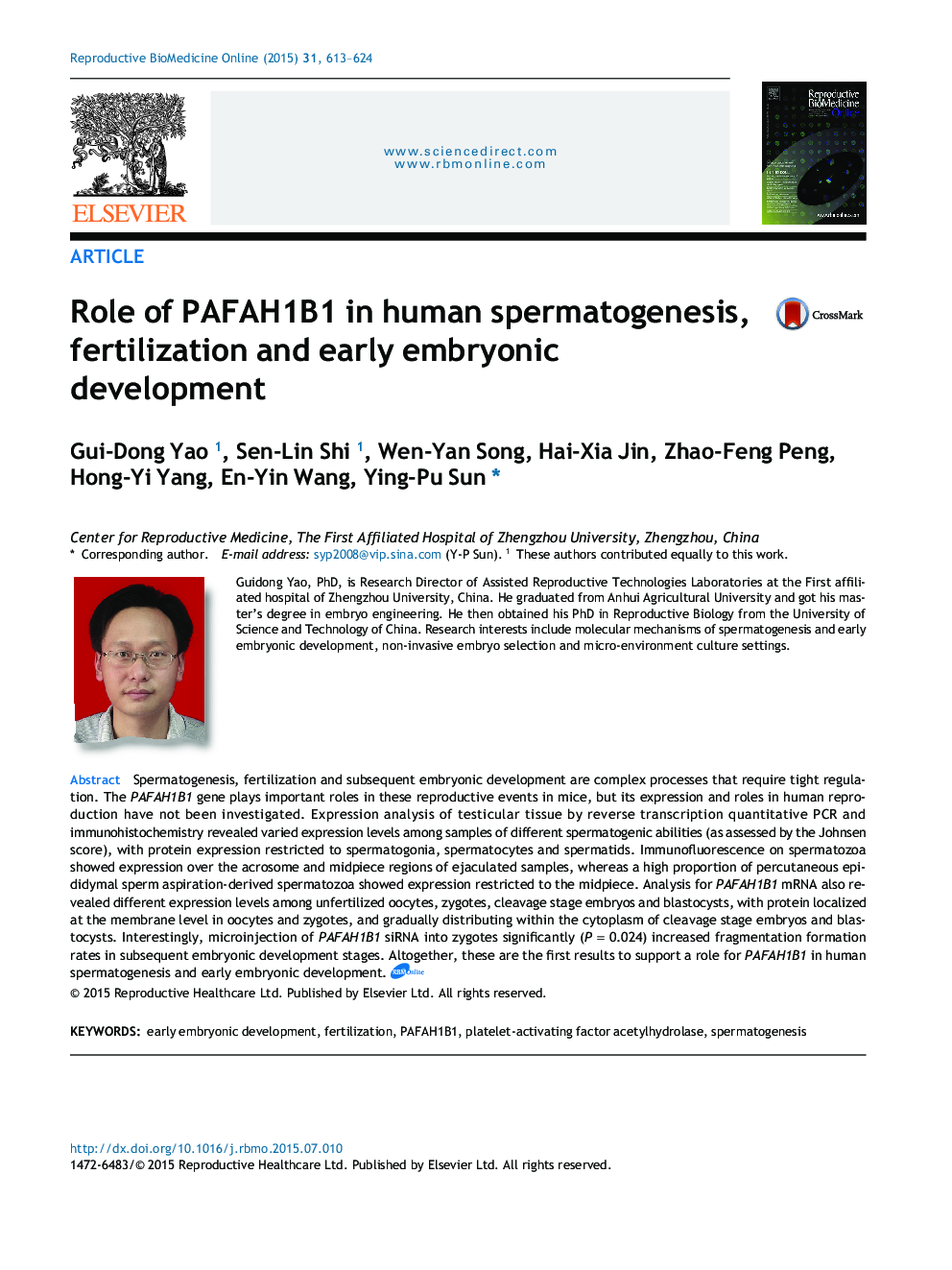| Article ID | Journal | Published Year | Pages | File Type |
|---|---|---|---|---|
| 6188674 | Reproductive BioMedicine Online | 2015 | 12 Pages |
Spermatogenesis, fertilization and subsequent embryonic development are complex processes that require tight regulation. The PAFAH1B1 gene plays important roles in these reproductive events in mice, but its expression and roles in human reproduction have not been investigated. Expression analysis of testicular tissue by reverse transcription quantitative PCR and immunohistochemistry revealed varied expression levels among samples of different spermatogenic abilities (as assessed by the Johnsen score), with protein expression restricted to spermatogonia, spermatocytes and spermatids. Immunofluorescence on spermatozoa showed expression over the acrosome and midpiece regions of ejaculated samples, whereas a high proportion of percutaneous epididymal sperm aspiration-derived spermatozoa showed expression restricted to the midpiece. Analysis for PAFAH1B1 mRNA also revealed different expression levels among unfertilized oocytes, zygotes, cleavage stage embryos and blastocysts, with protein localized at the membrane level in oocytes and zygotes, and gradually distributing within the cytoplasm of cleavage stage embryos and blastocysts. Interestingly, microinjection of PAFAH1B1 siRNA into zygotes significantly (P = 0.024) increased fragmentation formation rates in subsequent embryonic development stages. Altogether, these are the first results to support a role for PAFAH1B1 in human spermatogenesis and early embryonic development.
